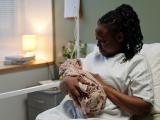Editor's note: This is the first in a seven-part series investigating the prospects for development of vaccines to head off the threat of an influenza pandemic posed by the H5N1 avian influenza virus. The series puts advances in vaccine technology in perspective by illuminating the formidable barriers to producing an effective and widely usable vaccine in a short time frame.
Oct 25, 2007 (CIDRAP News) – It has been 10 years since the H5N1 strain of avian influenza first grabbed international attention by causing the death of a Hong Kong 3-year-old, the novel virus's first known human casualty (see Bibliography: CDC 1997). In the decade since, the virus has torn across the globe, causing 332 known human illnesses and 204 deaths in 12 countries, according to the World Health Organization (WHO), as well as the deaths or preventive slaughter of hundreds of millions of birds.
In that time, avian flu and the potential human pandemic it could cause have waxed and waned in public attention. Scientific attention to the H5N1 threat, though, has never wavered. Much of that attention has focused on finding a vaccine against H5N1, "the single most important public health tool for decreasing the morbidity, mortality and economic effects of pandemic influenza," according to Dr. Gregory Poland, director of the Mayo Clinic's Vaccine Research Group in Rochester, Minn. (see Bibliography: Poland 2006).
But after almost a decade of research, a safe, effective, affordable, and abundant vaccine against H5N1 flu remains disappointingly out of reach. The search for a human avian-flu vaccine that could be developed and delivered in time to short-circuit a pandemic has been dogged by multiple obstacles across many sectors. They include patchy scientific knowledge, sparse government funding, thin manufacturing and packaging capability, and restrictive regulatory structures—along with the wily immunology of the H5N1 virus itself.
Despite recent encouraging news from several clinical trials, the scientific—and financial and political—hurdles to producing a widely deployable vaccine remain dauntingly high. As the WHO admitted in its Global Pandemic Influenza Action Plan, published last year, "At the present time, if an influenza pandemic were to occur, the potential vaccine supply would fall several billion doses short of the amount needed to provide protection to the global population" (see Bibliography: WHO 2006).
A chronic low priority
The search for a pandemic vaccine was hobbled from the start by the relatively low priority placed on influenza research before the 1997 Hong Kong outbreak. Almost 80 years had passed since the 1918 pandemic, an outbreak that was globally traumatic but was largely, and strangely, overlooked by historians of the period (see Bibliography: Crosby 1989). For most, "pandemic" would have evoked not the estimated 100 million dead of 1918 but the approximately 1 million worldwide deaths in 1968-69, the mildest pandemic since modern records began—or the failed pandemic alarm sounded in 1976 after swine flu cases were discovered in Fort Dix, N.J., and the rash of adverse events triggered by the emergency vaccination campaign that followed.
As a public health threat, flu had faded from federal, commercial, and thus public attention. A 1985 Institute of Medicine (IOM) report, "New Vaccine Development" (updated in 2000 as "Vaccines for the 21st Century") urged fresh focus on flu-vaccine research but, coming as concern over AIDS began to crest, attracted no additional investment to flu (see Bibliography: IOM 1985, IOM 2000). Consumption of seasonal flu vaccine was relatively low: Americans received 54.9 million doses in 1995, according to data from the Centers for Disease Control and Prevention (CDC), and an additional 16.6 million were returned unused to manufacturers (see Bibliography: Santoli 2007). Lacking a strong public appetite for seasonal flu vaccine, and thus a reliable market, flu-vaccine manufacturers saw no reason to improve on the cumbersome egg-based production technology that had been used since the 1950s.
"Influenza has not been treated with the degree of medical attention that the disease warrants," Dr. Anthony Fauci, director of the National Institute of Allergy and Infectious Diseases (NIAID), warned in a 2006 commentary (see Bibliography: Fauci 2006). "There is not an adequate baseline of preparedness in the United States to deal with the potential of pandemic influenza."
Gaps in the knowledge base
Recent assessments by US and European experts have conceded that flu research still lags. A blue-ribbon panel convened last year by the NIAID recommended in a June 2007 report that "eight specific aspects of influenza research in which there are substantial gaps in knowledge" receive immediate attention. The areas included clinical and immune responses to flu, flu epidemiology, animal models for flu research, antivirals, diagnostic assays, and, notably, vaccines, of which the group said: "Development of improved influenza vaccines is a key priority for the control of both seasonal and pandemic influenza" (see Bibliography: NIH 2007).
Echoing that report, the European Centre for Disease Prevention and Control's technical advisory groups on human H5N1 vaccines warned in August that 10 essential research questions must be answered before a vaccine can be achieved. The questions' very basic nature—How much antigen should a vaccine contain? How many doses should be given? How long does vaccine protection last?—suggest how far flu-vaccine science has yet to go (see Bibliography: European Centre for Disease Prevention and Control 2007: Technical report).
Funding: A starvation diet
The historical low profile of flu research translated into a chronic lack of investment. For most of the past decade, as well as many years before that, the field was starved for money. In 2001—after the 1997 outbreak, but before H5N1 began its global spread—the NIH's entire flu-research budget was $20.6 million, with $14.9 million of that in NIAID activities (see Bibliography: NIAID 2007). Funding stayed stagnant until the White House issued the National Strategy for Pandemic Influenza in November 2005 and called for $7.1 billion to be appropriated for flu. As of February, when the fiscal year 2007 budget was finalized, $5.3 billion had been appropriated overall, and NIH's flu research budget had been raised to $222 million (see Bibliography: NIH 2007).
Those appropriations have gone to fund a wide array of pandemic-preparation tasks, from improving state and local planning to supporting antiviral research (see Bibliography: Trust for America's Health 2007). Strictly within the vaccine realm, funds have been divided among research, production, and purchase of existing vaccines for the national stockpile. As of May 2007, Congress had given the Department of Health and Human Services (HHS) $5.6 billion for pandemic preparedness; HHS has allocated $3.2 billion of that to expanding vaccine capacity. So far the agency has committed $1.5 billion of those funds, including $1 billion for research into alternative production methods such as cell culture, $147 million for research on low-dose vaccines, and $133 million for retrofitting existing plants to improve manufacturing capacity (see Bibliography: HHS 2007; Trust for America's Health 2007).
"We are finally starting to do the right thing, because money is being put in," Poland said, "but we are late. We are really playing catch-up" (see Bibliography: Poland 2007).
For the two years since federal money began flowing, scientific and public health groups have begged the administration to allocate more. In November 2005, May 2006, and again in April and June 2007, the Working Group on Pandemic Influenza Preparedness—an umbrella organization for 15 medical and science societies—unsuccessfully urged members of Congress to increase funding for the whole panoply of pandemic preparation, including vaccine research and development (see Bibliography: Working Group for Pandemic Influenza Preparedness 2005, 2006, 2007).
US leads other countries
Late though the United States may have been in funding vaccine research, it nonetheless outshines other countries. "Government officials in the five Western European countries where influenza vaccine production facilities are located . . . have provided virtually no public funding to support H5N1 vaccine trials," David Fedson, MD, wrote this summer in the Journal of Public Health Policy. "Germany is the sole exception, providing modest support for a trial of one company's vaccine" (see Bibliography: Fedson and Dunnill 2007: Commentary). Fedson is a retired academic and vaccine-industry executive who has published critical analyses of pandemic-vaccine planning in a number of journals.
There is widespread fear in the research community that the money is simply not enough.
"The political inertia is surprising, particularly as politicians, if and when a pandemic eventuates, will be asked why, despite repeated warnings, they did not take appropriate action in time," Lars Haaheim of the University of Bergen said in a stinging May article in Influenza and Other Respiratory Diseases. "With very few exceptions, the academia, research establishments and vaccine industry [have] had to settle for meagre and sometimes no public support at all" (see Bibliography: Haaheim 2007).
The pandemic vaccine puzzle
Part 1: Flu research: a legacy of neglect
Part 2: Vaccine production capacity falls far short
Part 3: H5N1 poses major immunologic challenges
Part 4: The promise and problems of adjuvants
Part 5: What role for prepandemic vaccination?
Part 6: Looking to novel vaccine technologies
Part 7: Time for a vaccine 'Manhattan Project'?
Bibliography

















